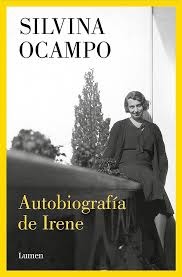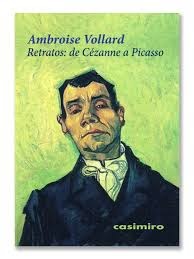
Original language: Español
Year of publication: 1948
Valuation: Highly recommended
Exactly five years ago we remembered Silvina Ocampo with a (ahem, ahem) great 2×1 review that you can read here. Today, taking advantage of the fact that it is 30 years since her death and that Lumen has recently republished part of her work, we remember her again with this Irene’s autobiography.
Five texts of a high average level make up the original from 1948, to which is added for the occasion the plot summary that Silvina wrote for the film transposition of The impostor by Torre Nilsson and an ending also written by Silvina for another film adaptation of the same text.
Open the volume Roman epitaph, brief story with Borgesian overtones (due to the historical context, the occasional unveiled reference, etc.) that constitutes a very dark fairy tale with an open ending in which the obsession with a woman occupies the central place. To give an idea of its atmosphere, its opening sentence will suffice: “Dark cypresses, a wooden bridge at the foot of the Aventine Hill, the bluest sky over the waters of the Tiber, unknown plebeian houses (without the redemption of the courtyards), organized, perfected, the tormented secret of a Roman knight.”
We continue with Network, story that is closer to the Bioy of Morel’s invention than to Borges. We are faced with a symbolic story with an oriental setting dominated by the image of a butterfly pierced by a golden pin. Interior and exterior monsters, the unusual and disturbing come together in a gothic story with a nightmarish atmosphere that could appear in any anthology of fantastic literature.
The impostor It is the most extensive of the stories, to the point that we could classify it as “nouvelle.” We must distinguish two distinct parts in it: the journal-like annotations that occupy 90% of the text and the final appendix. That is a continuous game of mirrors in which (un)reality, otherness, the border between dream and reality, between madness and sanity, occupy a predominant place. Because “The true is like God; it does not show itself immediately, you have to guess it among its manifestations.” Unfortunately, the final appendix partially spoils the above since it overexplains it and deprives us of an open ending that is more in line, I believe, with the development of the text.
By the way, I think that part of the great The greyhounds, the greyhounds and much of the great Mariana Enriquez draws from this story.
Fragments of the Invisible Book It is perhaps the weakest of the five. With a Borgesian beginning in terms of setting and handling of the unusual and of a more aphoristic than narrative character (serves as an example I don’t know myself. I know the others, those who know me) this monologue of a prophet? combines memory and imagination, life and death, to shape reality.
Close the volume Irene’s autobiography, text thanks to which a timeline could be established that would go from Maria Virginia Estenssoro (The deceased) or María Teresa Bombal (The shrouded) to Mariana Enriquez, passing through Silvina. Irene, a visionary girl but unable to remember, which implies a gift and a curse at the same time, walks through her life in a gothic story with a disturbing atmosphere with a wonderful ending.
For those who remember, the time is not too long. For those who wait it is inexorable
In short, a magnificent example of Silvina Ocampo’s talent for creating images of environments and atmospheres that can only be attributed, in addition to what has already been mentioned, to some references that are too “visible.” I think that over the years Silvina moved away, in part, from those long shadows and elevated her work and separated her name from the damned labels of “wife of”, “friend of”, “sister of”, etc. In fact, the weakest thing I’ve read about her so far is that Those who love, hate which he wrote in four hands with Bioy. And I bet my neck that book was also wonderful but Adolfito arrived (yes, very handsome and everything you want, he wrote worse than Silvina) and he screwed up. And to anyone who dares to tell me otherwise, I DARE YOU TO A DUEL!!
Also from Silvina Ocampo in ULAD: Anthology of fantastic literature, The repetitions and other unpublished stories, Those who love, hate, The fury and other stories
Source: https://unlibroaldia.blogspot.com/2023/12/silvina-ocampo-autobiografia-de-irene.html


